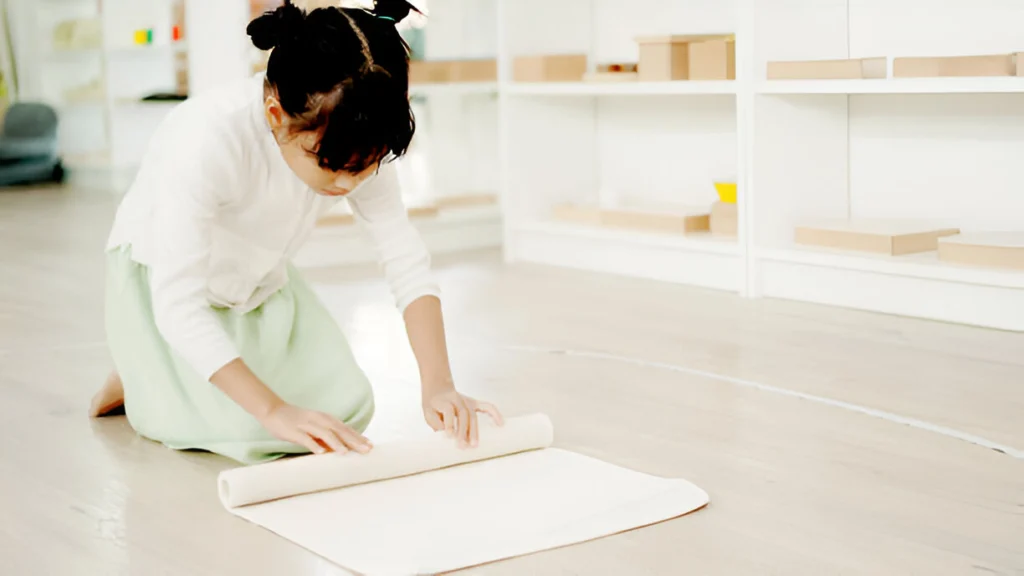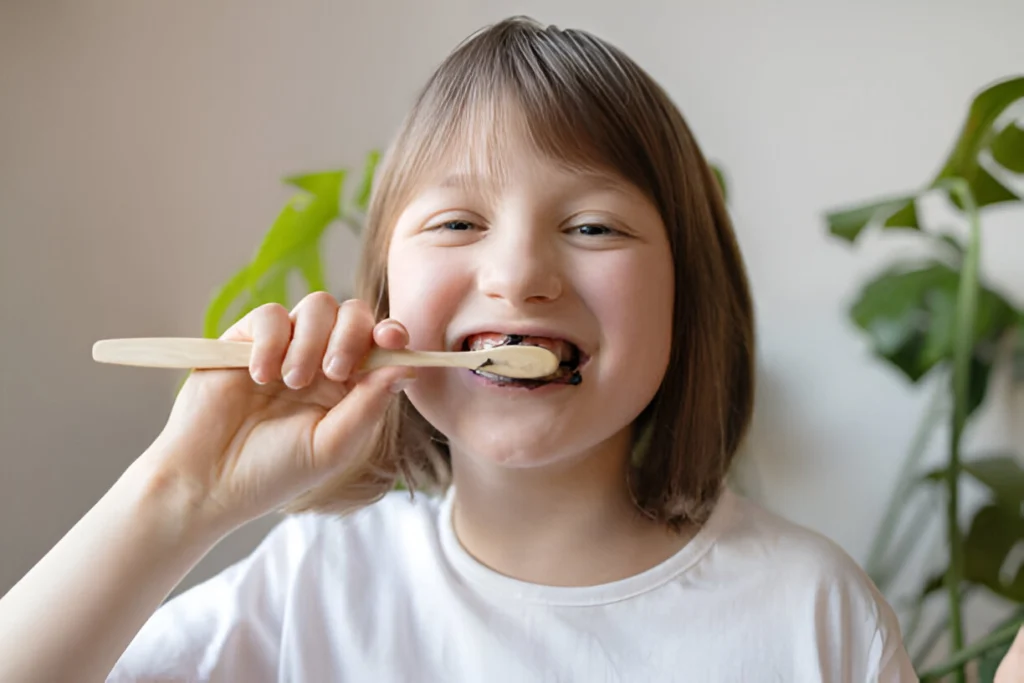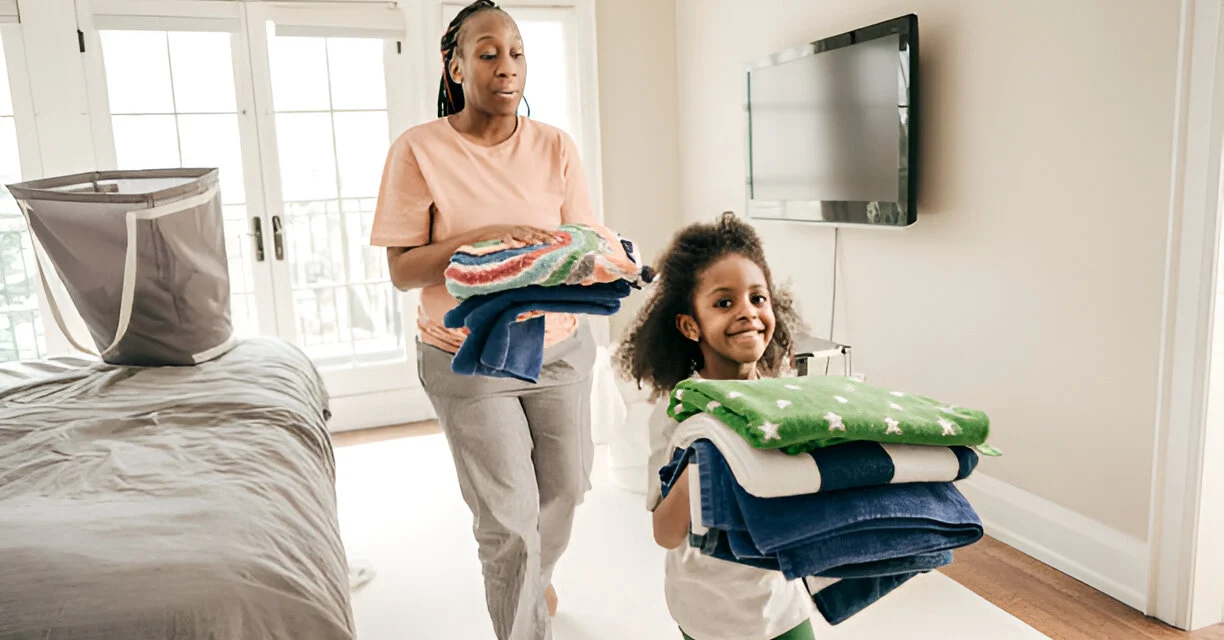Being a parent means juggling a lot. It’s about managing schedules and making sure everyone’s needs are met. But, I’ve found that a well-organized family life reduces stress and helps kids succeed in the long run1.
My family had a routine when I was growing up. It gave us security and stability. We knew when it was time for homework, chores, or dinner. This routine taught us self-discipline and healthy habits that lasted into adulthood2.
Key Takeaways
- Establishing routines and schedules can provide children with a sense of security and control.
- Involving children in household tasks and responsibilities builds self-discipline and life skills.
- Effective family organization promotes better communication and time management for a balanced lifestyle.
- Utilizing a shared family calendar, whether digital or paper-based, can help prevent scheduling conflicts.
- Incorporating feedback and adaptability ensures the longevity of your family’s organizational systems.
In this article, we’ll look at ways to organize your family’s daily life. We’ll cover morning routines to weekend activities. By focusing on family organization, you’ll not only reduce stress but also help your kids become responsible and resilient3.
Establishing Routines for Children
Creating consistent family routines can change the game for parents and kids. Research shows that kids thrive on regular, predictable, and consistent routines4. A set schedule gives kids a sense of security, lowers conflicts, and reduces anxiety5.
Setting a Predictable Schedule
Starting each day with a chat about what’s ahead helps kids feel secure4. Family counselor Tara Michener says regular activities, chores, and homework cut down on fights. It also takes the pressure off parents4.
After school, kids need time to play actively4. Bedtimes can vary based on age, with weekends being great for family bonding4.
Reducing Conflicts and Anxiety
Consistent routines can lower stress in kids, reducing anxiety and sadness5. Daily routines help set kids’ body clocks, especially during teen years5. Well-thought-out routines are essential for a family that works well together5.
Setting routines can make parents feel more in charge and less stressed, especially when things get busy5. Consistent routines boost parental confidence and help manage daily tasks. This frees up time for other fun activities5.
Building Self-Discipline and Healthy Habits

Teaching self-discipline and healthy habits is key for organized kids. Dr. Markham, a mom of seven, stresses self-discipline’s value in her life6. She sets clear goals, breaks them down, and has backup plans. This helps kids face tough tasks and build lasting self-discipline6.
Daily routines are a great way to teach healthy habits6. Being consistent and adding good habits to daily life helps kids manage themselves without constant reminders6. Practices like being on time and waiting for rewards also boost self-discipline6.
Studies show kids without self-discipline find it hard to reach their goals7. But, learning discipline makes them more positive, assertive, and responsible7. Being kind to oneself and believing in growth also helps with self-discipline7.
| Strategies for Building Self-Discipline | Benefits of Self-Discipline |
|---|---|
|
|
By focusing on self-discipline and healthy habits, parents can help their kids become organized and goal-focused67. These skills help kids now and in the future67.
Helping Children Cope with Change
When unexpected things happen, it’s key to keep your kids feeling safe and steady. Routines and familiar patterns help them deal with change8.
Providing a Sense of Normalcy
Family routines, like bedtime and meals, help kids feel grounded during tough times8. A predictable schedule gives them a sense of control and security, even when things are chaotic8.
Military families can find support on the Military Student website and Military Teens on the Move program8. The Military OneSource hotline also offers 24/7 help, connecting families with resources8.
- Children need 9 to 11 hours of sleep each night, says the American Academy of Pediatrics8.
- Studies show frequent moves can lead to school problems for kids9.
- Young kids, especially in kindergarten or first grade, may struggle with moves9.
- Pre-teens and teenagers find it hard to adjust due to their growing peer connections9.
Keep your kids comfortable and stable, even when things change. Stick to routines, enjoy familiar activities, and get help when needed. This way, you can help them cope with change and regain a sense of normalcy during tough times89.
Watch for signs of trauma in kids, especially after big events10. Look for anxiety, constant questions, and behavior changes. If you see these signs, get help from doctors or mental health experts10.
“When you offer routine, it gives back a sense of normalcy.”
– Tara Michener, Family Counselor8
Focus on your kids’ emotional health and dealing with uncertainty together. This builds resilience and helps them face change10.
Achieving a Flexible Balance
It’s key for families to find a flexible balance between structure and creativity. An expert says11 that structure can actually help creativity grow. Kids can pick their art projects during set creative times11.
It’s also vital to evolve routines as kids grow or when new ones join the family. Talking about changes with kids helps make them feel secure11. This way, families can stay stable while meeting everyone’s unique needs11.
- Prioritize family-friendly policies that offer flexible work arrangements like telecommuting, reduced hours, and job sharing12.
- Work with your employer to set realistic work priorities that fit your family life13.
- Support a culture of work-life balance and gender equity where both personal and professional goals are valued equally13.
By finding a flexible balance between structure and creativity, families can do well in both their personal and work lives11. Achieving this balance is crucial for lasting success and happiness11.
Morning Routines for a Smooth Start

Starting your day with a routine can make mornings easier. Prepare the night before to avoid morning chaos. This way, your kids will wake up refreshed and ready for the day.
Being cheerful when waking up helps set a good mood. Letting kids choose parts of their routine can also reduce morning stress. It makes mornings more enjoyable for everyone.
Having a healthy breakfast is key to feeling energized and focused14. A short workout in the morning boosts mood and energy14. Adding positive affirmations and meditation can help you feel more confident and motivated14.
Ending the morning with a hug or wave can make kids feel good about their day15. Writing down your morning routine can also help you manage time better15. It helps you understand how long tasks take and saves time by preparing the night before15.
By focusing on organization, positivity, and healthy habits, parents can make mornings better for everyone15. Sticking to a routine can save time and make the day more productive and calm15.
After-School Routines and Active Play
Creating a good after-school routine is key for kids’ happiness. After learning for 6-8 hours, they need to relax, recharge, and play. A balanced routine helps them do better in school, makes friends, and keeps them healthy16.
Begin with a healthy snack to give them energy. Then, let them do homework when they’re still focused17. Moving on to physical activities like sports or outdoor games helps them stay healthy16.
Make sure your child tries different fun activities. This could be sports, arts, music, drama, or STEM programs18. These activities help them learn new things and make friends. They also add fun and structure to their day18. Don’t forget to include time for relaxing and spending time with the family.
A good after-school routine reduces stress, builds resilience, and strengthens family ties17. By focusing on active play and a balanced schedule, your child will do well after school.
The best after-school routine matches your child’s interests and helps them grow. Try out different activities to find what works for your family. This way, your child can have fun, learn, and enjoy their after-school time.
Evening Routines and Family Meals
Creating a structured evening routine is great for your family. Make dinner a time to all be together, without distractions19. Dinner is usually at 5:30 at this household19.
Use dinner to talk about your day. This helps everyone share their experiences20. Having family dinners can make it easier to eat together a few nights a week.
After dinner, kids can help with simple chores like cleaning up or loading the dishwasher19. They start getting ready for bed around 7:15. Parents don’t help with bath time anymore19.
Bedtime routine starts at 8 o’clock for each child19. Older kids have their lights out by 9 o’clock19. Parents go to bed at 9:30.
Add relaxing activities to your evening, like reading or playing games20. A calming routine can help your family bond and relax21. A study by the National Sleep Foundation found that 45% of people sleep better with a nightly routine.
| Activity | Time |
|---|---|
| Family Dinner | 5:30 PM |
| Bath Time | 7:15 PM |
| Bedtime Routine | 8:00 PM |
| Lights Out for Older Kids | 9:00 PM |
| Parents’ Bedtime | 9:30 PM |
19 Some people like to walk in the evening, listening to podcasts20. A “ten-minute tidy” after dinner or bedtime can keep your home organized21. Research by the American Academy of Pediatrics shows a 59% lower risk of behavioral problems in children with bedtime routines21.
A survey by the American Psychological Association found that families with evening routines are less stressed and happier21.
“Consistent evening routines not only improve sleep quality but also contribute to better overall family well-being.” – National Sleep Foundation
21 A study in the Journal of Child and Family Studies found that children with evening routines do better in school and emotionally21. The American Time Use Survey shows that families with evening routines manage their time better and have less chaotic mornings.
Bedtime Routines for Healthy Sleep
Creating a bedtime routine is key for kids to sleep well. As the sun goes down, it’s time to calm down and get ready for sleep22.
Infants need 14–15 hours of sleep, including naps22. Toddlers need 12–14 hours, and preschoolers 11–13 hours22. School-age kids need 10–12 hours22. A regular bedtime and a calming routine help your child sleep well.
Activities like storytelling and soothing songs help kids sleep22. Avoid exciting play before bed to help them sleep better22. Start the bedtime routine 30–60 minutes before bed and make sure their sleep area is safe and comfy22.
Signs of not enough sleep include hyperactivity and moodiness22. A consistent bedtime routine can solve these problems and help your whole family sleep better22.
| Age Group | Recommended Sleep Duration |
|---|---|
| Infants (0-12 months) | 14-15 hours, including naps22 |
| Toddlers (1-3 years) | 12-14 hours22 |
| Preschoolers (3-5 years) | 11-13 hours22 |
| School-age children (5-12 years) | 10-12 hours22 |
The American Heart Association says healthy sleep is vital for heart health23. They recommend 7 to 9 hours of sleep for the best health23. Reading before bed can lower stress by 50% in six minutes23.
Not using screens before bed helps keep sleep patterns right23. More than a third of adults don’t get enough sleep, says the National Sleep Foundation24. Adults who sleep less than seven hours are three times more likely to be depressed24.
Newborns to 1-year-olds sleep 14-18 hours daily, including naps, says Dr. Mitchell24. Toddlers need 12 hours, and preschoolers 10-12 hours24. Children and teens need 8-10 hours by middle school, Dr. Mitchell suggests24.
Stricter bedtime routines help kids sleep faster and longer, with fewer wake-ups24. About 22 million Americans have sleep apnea, says the National Sleep Foundation24. Three out of five obese children have sleep apnea, the National Sleep Foundation reports24.
“Creating a consistent bedtime routine is one of the most important things parents can do to ensure their children get the quality sleep they need to thrive.”
By setting up a calming bedtime routine, you can help your child sleep well. This sets them up for success the next day. With the right habits, your family can enjoy better sleep.
Weekend Family Time

Weekends are a great time to bond with your family. Doing things together can make your family closer and create memories that last25. Try going to the grocery store, visiting museums, or doing chores together. These activities can become special family traditions25.
Going on hikes or bike rides is also a good idea. It’s a way to stay active and enjoy nature together25. Having friends over can help your kids make friends and learn social skills25. It’s also important for parents to have time for themselves to keep their relationship strong25.
By focusing on weekend family time, you can build unity and healthy habits. You’ll also make memories that your family will always remember25. The most important thing is to choose activities that everyone enjoys25.
“Spending quality time with my family on the weekends is one of the most rewarding aspects of my life. It’s a chance to step away from the hustle and bustle and simply enjoy each other’s company.”
| Activity | Benefits |
|---|---|
| Grocery Shopping | Teaches budgeting and life skills, promotes teamwork |
| Museum Visits | Enhances cultural awareness, sparks intellectual curiosity |
| Household Chores | Fosters a sense of responsibility, develops problem-solving skills |
| Family Hikes/Bike Rides | Promotes physical activity, strengthens family bonds |
| Hosting Friends | Encourages social skills, builds meaningful relationships |
Embracing weekend family time can make your family stronger and more connected. It creates memories that will last forever25. Sharing activities and bonding moments can improve communication, reduce stress, and bring your family closer together26.
Family Organization
Creating a family organization can change how you manage your home. It helps everyone stay in sync. A family organizer is a key tool for this. It keeps tasks and important info at your fingertips27.
A good family organizer has many parts. It can have schedules, emergency numbers, and home details. Start with a binder or digital file and add more sections as you go. This way, everyone can find what they need fast, cutting down on stress27.
Customizing Your Family Organizer
Think about what you need in your family organizer. Here are some ideas:
- Family contact info (phone numbers, emails, emergency contacts)
- Schedules (school, work, sports, appointments)
- Household info (utility providers, account numbers, maintenance)
- Important documents (insurance, medical records, financial info)
- Meal plans and grocery lists
- Family calendars and to-do lists
Make your family organizer your own. Try different ways, like digital files or physical binders, to see what works best for you28.
| Type of Organization | Percentage |
|---|---|
| Domestic Organizations | 65% |
| Religious Organizations | 15% |
| Indian Organizations | 5% |
| ADR Organizations | 8% |
| Foreign Organizations | 7% |
Creating a detailed family organizer can make life easier. It helps manage your home, lowers stress, and keeps your family organized. Choose a method that fits your family and stick with it2728.
Conclusion
Effective family organization is key to a happy and supportive home. By setting routines, teaching self-discipline, and helping kids adjust to change, your home can become a place of growth and well-being. The analysis emphasizes the importance of understanding how family policies work at all levels. It shows we need a clear focus that goes beyond the nation-state to tackle these challenges29.
Creating a family organizer helps manage schedules and tasks, making your days and weekends smoother. The secret to successful family organization is finding a balance that fits your family’s unique needs30.
By using the tips from this article, you can make your home a place of harmony and organization. Whether it’s starting the day right, planning meals, or spending time together on weekends, your efforts will pay off in the long run31.





